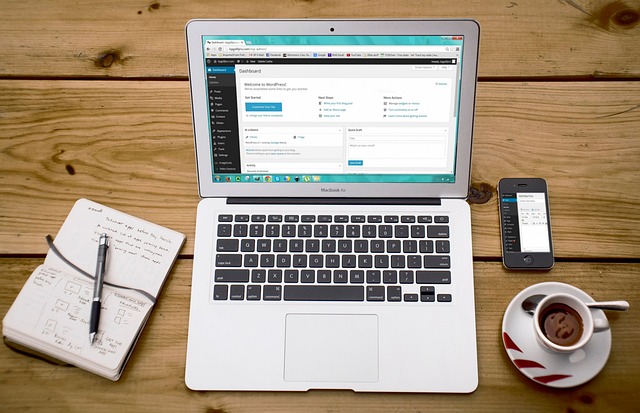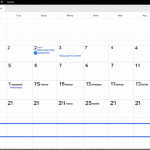A/B testing turns guesswork into data-backed decisions, helping you pinpoint what truly drives user engagement. By systematically comparing variations, you unlock insights to refine your website’s design and content. Mastering this process empowers you to boost performance efficiently, reducing risk and enhancing results with measurable evidence. This method transforms optimization from an art into a precise science.
Understanding A/B Testing and Its Strategic Value
When discussing implementing a/b testing to improve website performance, you’re embracing a controlled experiment where two versions typically called the control (A) and the variant (B) are shown to separate groups of users. The difference in performance, measured through key metrics like conversion rate, click-throughs, or revenue, is then analyzed using robust statistical methods. This split test design is pivotal for identifying which elements truly influence user decisions, removing guesswork from the process.
In parallel : How does gamification influence consumer engagement in UK marketing?
A/B testing empowers teams to adopt genuine data-driven decision making. Leaders and marketers rely on clear evidence, using findings to refine landing pages, emails, or even product features. By setting clear hypotheses and tracking results, organizations minimize bias and enhance campaign effectiveness.
Reliable test results require proper experiment setup best practices. This means careful randomization of user groups, precise sample size calculation, and clear metrics selection. Statistical significance in experiments assures that differences are not just due to chance, typically targeting at least a 95% confidence interval before acting on any outcome. Without these guidelines, it’s too easy to misinterpret user behavior or waste resources on ineffective changes, undermining conversion optimization strategies.
Topic to read : How does gamification influence consumer engagement in UK marketing?
Executing Effective A/B Tests for Enhanced Conversions
Step-by-step process: planning, designing, and launching A/B experiments
Start with hypothesis creation for experiments. Use analytics and customer behavior analysis to identify points for improvement, then define a measurable hypothesis—such as, “Changing the landing page headline will improve signup rates.” Emphasize experiment setup best practices: determine clear success metrics like conversion rate or bounce rate reduction, then establish test duration guidelines based on estimated sample size calculation. Design variations, split traffic randomly, and implement experiment randomization techniques to minimize bias in experiments. Launch the test, monitoring user engagement metrics and user experience improvements through reliable analytics dashboards.
Segmenting users and targeting audiences for increased relevance and conversion lift
Apply customer segmentation for tests and traffic segmentation techniques to improve personalization impact on conversions. Segment by demographics or behaviors using behavioral targeting techniques to uncover distinct conversion lift opportunities. Personalization vs. testing balance is important—avoid allowing personalization efforts to compromise valid experiment goal setting. Iterative testing approach and conversion funnel analysis help refine segments over time, revealing which groups respond best to specific landing page optimization tips or content variation ideas.
Selecting and using A/B testing software tools: features comparison and integration considerations
A/B testing tools overview highlights split testing for ecommerce and multivariate testing basics. Compare popular testing software features—such as automated testing solutions, reporting and visualization tools, integration with analytics platforms, and real-time experiment monitoring. Consider cross-device testing relevance, session replay tools, and seamless experiment documentation importance. Integration ensures accurate performance metric selection and informs continuous optimization mindset for sustained gains.
Maximizing Impact: Best Practices, Pitfalls, and Business Use-Cases
Common mistakes in A/B testing and how to avoid them for trustworthy outcomes
Conversion optimization strategies hinge on avoiding common testing mistakes that could jeopardize results. Failing to calculate the proper sample size or abandoning tests too early can produce misleading outcomes, skewing confidence intervals or undermining statistical significance in experiments. For trustworthy conversion funnel analysis, ensure experiments run for the recommended test duration guidelines and utilize traffic segmentation techniques. Ignoring mobile optimization tests, for example, may distort conclusions if a large share of your audience visits from smartphones.
Session replay tools and heatmap tools usage help identify user experience improvements, making it easier to validate hypotheses. Relying solely on raw data risks misinterpreting user engagement metrics. Instead, emphasize both iterative testing approaches and rigorous documentation to strengthen data-driven decision making and minimize bias in experiments.
Documentation, interpretation, and ethical standards in experiment reporting
The importance of experiment documentation cannot be overstated. Thoroughly recording experiment setup best practices, segmentation by demographics, and testing ethical considerations makes findings actionable and reproducible. Ethical standards emphasize user consent, anonymization of data, and clear communication about testing intentions especially in call to action testing and pricing strategy testing. Proper documentation supports learning from failed tests and trend analysis in results over time, ultimately supporting continuous optimization mindset adoption.
Business success stories and advanced applications of A/B testing across industries
A/B testing in digital marketing and websites has moved beyond basic split test design. Real-world use-cases span mobile app experience tests, checkout process experiments, and cross-device testing relevance. A/B testing case studies reveal how landing page optimization tips and multivariate testing basics fuel incremental improvements measurement across sectors from email campaign split testing in e-commerce to test duration guidelines in B2B lead generation. Businesses become more agile by integrating experiment randomization techniques, interpreting test results with care, and fostering a culture of rapid iteration for lasting conversion rate benchmarks gains.





